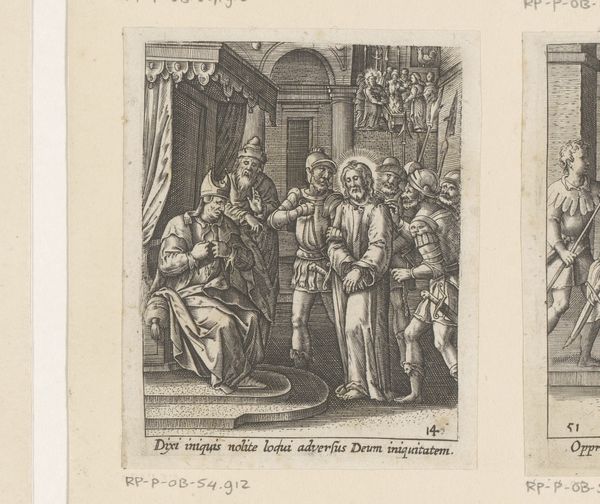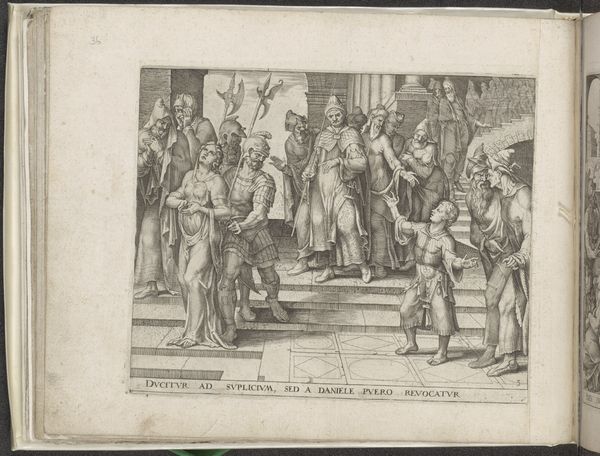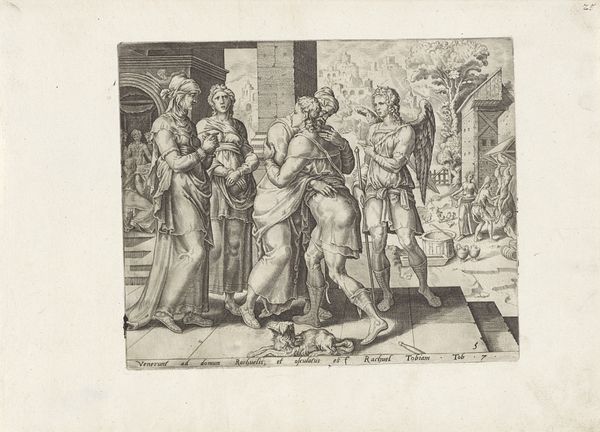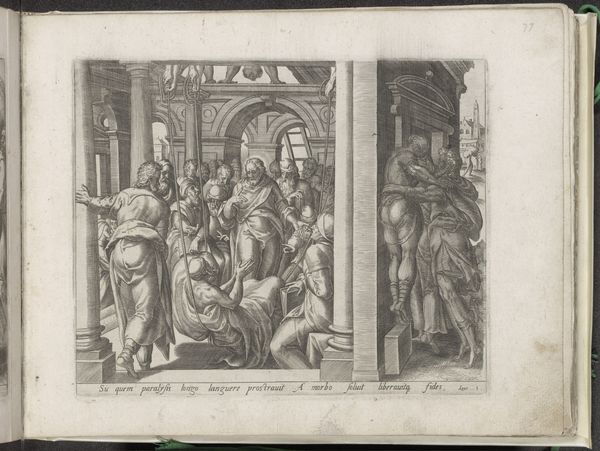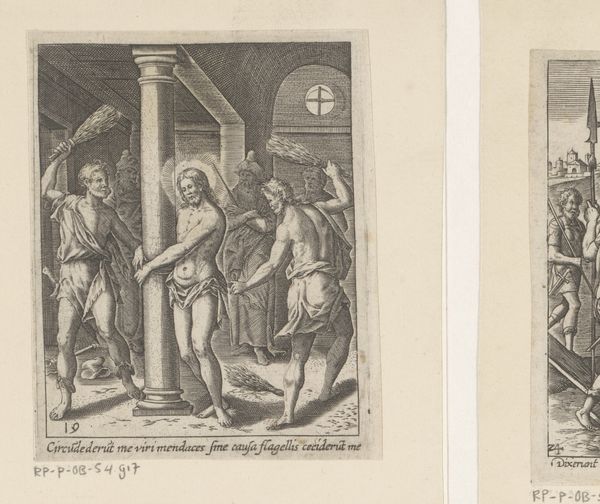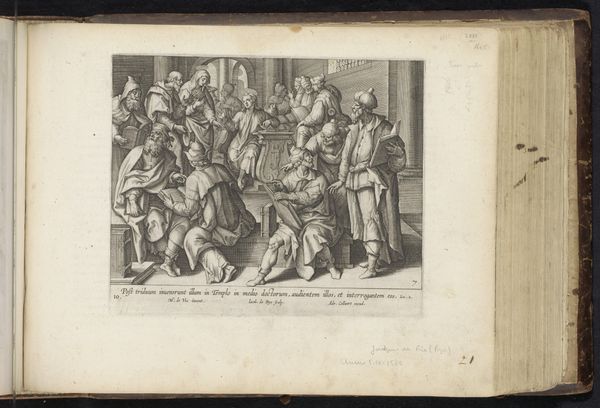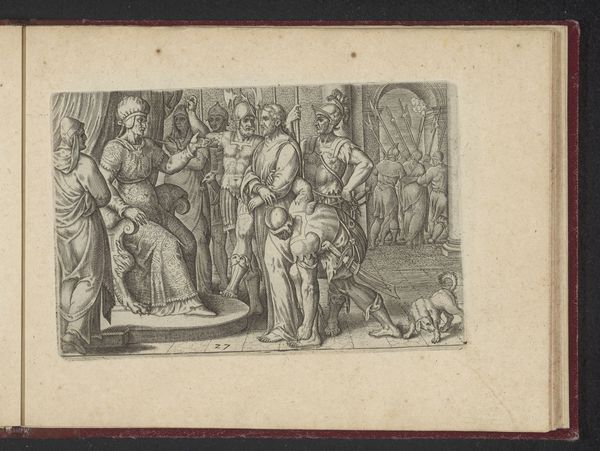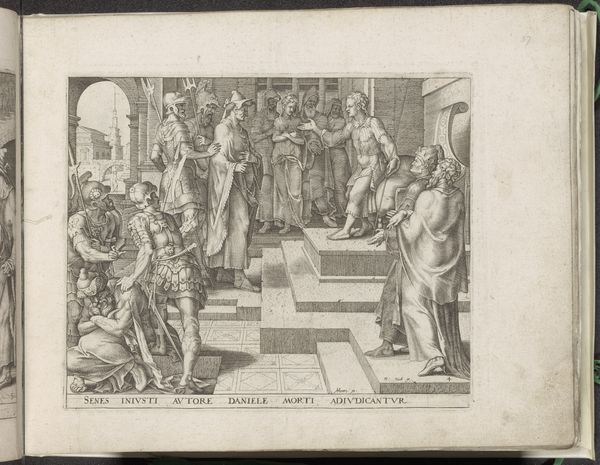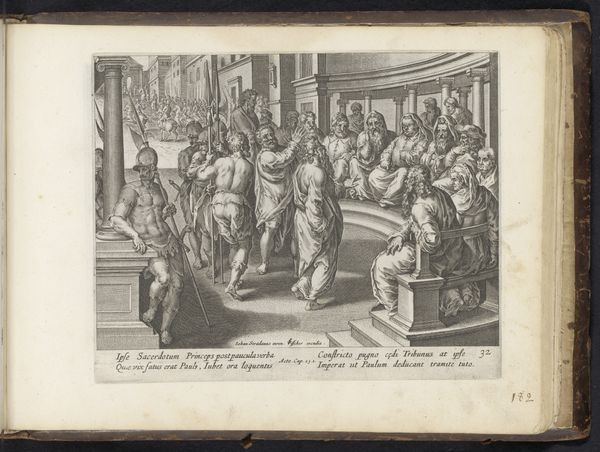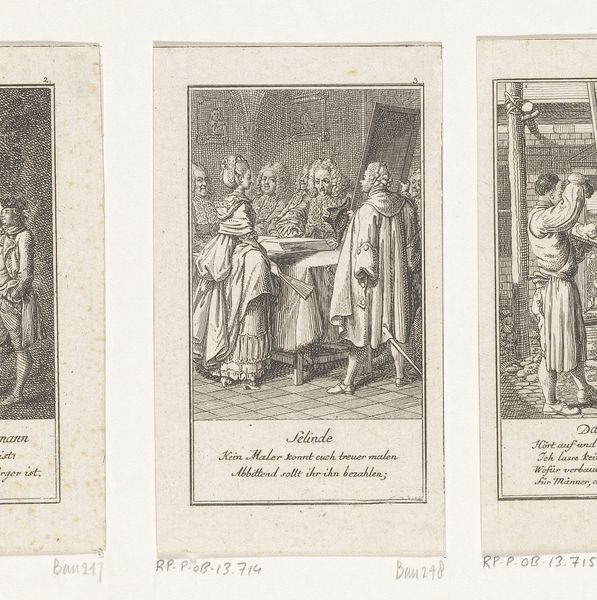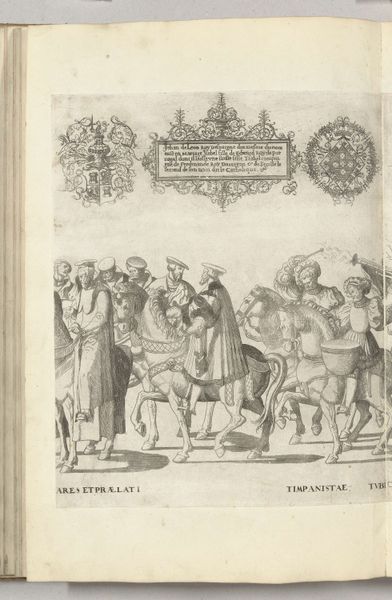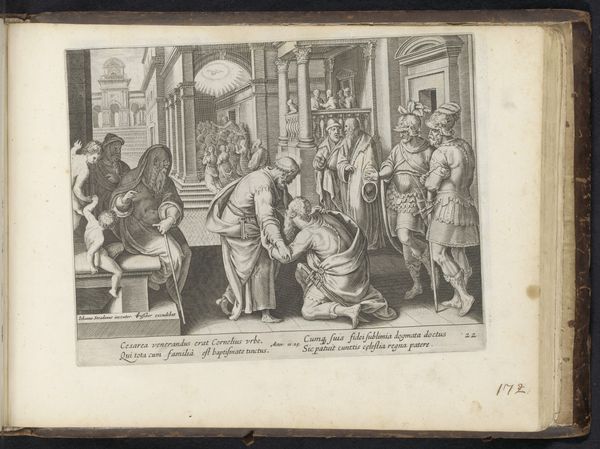
print, engraving
#
baroque
# print
#
figuration
#
line
#
history-painting
#
engraving
Dimensions: height 91 mm, width 73 mm
Copyright: Rijks Museum: Open Domain
Curator: Welcome to the Rijksmuseum. Here we are standing before an engraving titled “Christus voor Kajafas” made sometime between 1582 and 1671 by Heinrich Ulrich. It's a scene of Christ before Caiaphas, depicted in detailed linear strokes. Editor: It strikes me immediately how tightly packed the composition is. So many figures, each face meticulously etched. But what's fascinating is Christ himself seems almost ethereally calm amidst the crowd. Curator: Absolutely, that contrast is key. Notice how Ulrich uses light around Christ's head almost to suggest a halo, focusing our attention. Caiaphas, on the other hand, stands tall with hand raised in judgement, and the artist makes excellent use of heavy robes and a headdress, signalling authority and power, of course. Editor: And it's a fraught moment. A man falsely accused of heresy, surrounded by the symbols of temporal authority – the weapons, the stern faces. It evokes questions about the dangers of religious and political institutions. Whose truth matters in the face of such power? Curator: The artist also captures the architectural details remarkably, the pillars creating a staged scene for these exchanges of earthly and divine judgment. Line engraving like this relied on pure technique, and look at the detail on the robes, as well as the faces of those awaiting sentencing to appreciate what it takes to realize this kind of artwork. Editor: The textual annotation below the image— “Circumdedérunt me canes multi: concilium malignántium obsédit me.” translates to “Many dogs have surrounded me; a company of evildoers encircles me”—this also situates this moment within a larger story of persecution. This feels timeless. Curator: A keen observation; religious art and history converge, shaping both devotion and doubt across eras. The lasting impression of Ulrich’s engraving resides in its layered exploration of power dynamics and ethical questions. Editor: For me, this print serves as a poignant reminder of humanity's enduring capacity for both belief and betrayal, and of course it allows me to connect personally to those who feel targeted due to their gender, beliefs or any other identities.
Comments
No comments
Be the first to comment and join the conversation on the ultimate creative platform.
